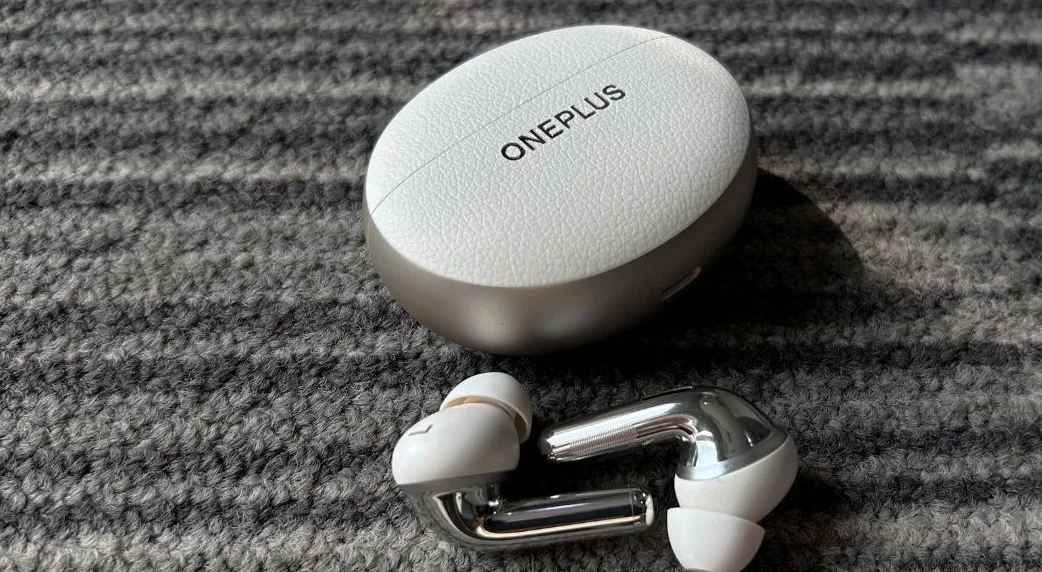Dyson wants to revolutionize the world of household cleaning and after vacuum cleaners the next thing to suffer his fury is the mop with Dyson Wash G1, but… Is a 699-euro electric mop really useful?
The first time I came across the Dyson Wash G1 was on its website in China. At the time I didn’t think much of it because I thought it was a Dyson product aimed at a specific market. Maybe in China they’re not so much into mops as they are into wet mops, hence the idea that Dyson is trying to reinvent a product like a mop.
The reality is that a month later I came across it at a private Dyson event where the arrival of this strange product was presented to the press. Coming from Dyson, it was clear that cleaning efficiency, design and simply working were the key points of the Dyson Wash G1.
But the question was still on my mind. Do we really need to reinvent the mop? And I think it’s a totally valid question. When we talk about cleaning, the mop, that modern invention by the Spaniard Manuel Jalón Corominas, is simple and efficient. It is undoubtedly dirty and has been improved over the decades.
What Dyson is proposing is both to modernize the mop and to sell a product that, right now, gives me the impression that it is a first generation that is too first generation. There are already vacuum cleaners that mop from Dyson itself, so what is Dyson Wash G1? What does it fix about a traditional mop?
I bought my first Dyson vacuum cleaner in the middle of the pandemic and, sure enough, the rumors were true: vacuuming becomes more pleasant with this machine. Will it convince me to trade in my Mercadona mop for this 700-euro product?
Simplicity and ease of cleaning are the order of the day

This is a product from Dyson, an English brand with a great engineering team, but also a great design team. That’s why this Dyson Wash G1 is as simple as can be.
It has two water tanks, the upper one with clean water and the lower one where the dirty water ends up. It also has two soft rollers and two other brushes to pick up dirt from the floor. I have to emphasize for the second time that this is not a vacuum cleaner, although it collects solid debris, it is a mop.
Underneath the rollers you will find a tray where all those elements that are not water end up and where all the dirt that you did not collect before will end up, when you vacuum.
All the elements are easy to remove so that they can be thoroughly cleaned once you’re finished. And we have to talk about this first of all, what about the smells and the dirt? The design of this Dyson Wash G1 is intended to make cleaning as easy as possible, but the cleaning of this mop must be taken into account.
On the one hand, you have the dirty water that remains in the pipes and in the tank. For this you can remove the dirty water tank, empty it and give it a quick rinse. But you also have a self-cleaning mode that uses just over a third of the clean water and does a thorough internal cleaning in 140 seconds.
After my weeks of testing at home, I can recommend that this self-cleaning system be run at least every other day of use. Of course, as soon as you finish cleaning you must empty the dirty water.
It cleans 90% of your floor, but it can’t get into the corners where the traditional mop can
Electric vacuum cleaners like the ones Dyson has have a great advantage over the sweeping brush in that they absorb the dirt, they don’t move it. What’s more, they go into practically all the places where the brush can reach.
One of the problems with the Dyson Wash G1 is that it can’t reach where a conventional mop can. For example, under some furniture, as you can see in the photo above.
It’s true that ergonomically they have done two things very well. First, you can get the arm at all kinds of angles to reach many places. Even places that are not very accessible, like this space between the sofa and the wall.
But one of its problems, perhaps one of the minor ones it has, but one that has got on my nerves, is that when you stick it to the skirting board, because of the design of the head and the space between the brushes and the plastic, there is between one and 1.5 centimeters that are not cleaned.
The same thing happens in the corners. Perhaps the solution would be a round brush that comes out of the head, or maybe make it more compact. That’s up to the Dyson design team.
This makes the Dyson Wash G1 very effective at cleaning 90% of your home, all those passageways and areas without furniture, but when you want to mop the floor under bookcases, TV stands, under the dining room table or similar places, the electric mop is not flat enough to be able to get under or get to an angle where it won’t bump into anything.
Another problem that I encounter, more than expected, is the areas of water that remain after passing the electric mop. And there are times, when for example it gets caught between the carpet and a piece of furniture, that due to the pressure it leaves small puddles of water.
And finally, one of those problems I didn’t expect to come across is… What happens when you finish mopping? Can you leave the Dyson electric mop anywhere? It’s supposed to be stored in its base at all times, because this is the problem you often run into: you leave traces of water on the floor.
It’s not the biggest of problems, but these marks left by the rollers, being wet, mean that you have to scrub that area again. So, if you buy this Dyson Wash G1, you have to plan to scrub the far side of the base, all the way to it. You won’t be able to leave it anywhere, or at most, in an area where you have ceramic flooring.
Testing what the Dyson Wash G1 can and can’t clean

I must warn you again that this Dyson Wash G1 is not a vacuum cleaner, so you should not use it to clean solid objects. But… what happens if you run it over something solid? Imagine you’ve dropped a cup of coffee or a bowl of cereal milk. Or you’ve dropped an egg on the kitchen floor or, worse, what happens if you run it over your pet’s physical gift?
Obviously, I haven’t reached that point, but I did want to test both the cleaning power and what it can and can’t take care of, as well as what happens next.
Cleaning liquids: The Dyson Wash G1 has no problem with any liquid it comes across. It doesn’t matter if it’s milk or a soft drink. Although I recommend that you go over the same area several times with liquids because that way you can be sure that you aren’t “cleaning” the floor with recently soiled water.
Cleaning liquids and soft solids: In my test it was with milk and cereal. It has no problem with the milk and cereal, but be careful, because all that soft cereal will get stuck in the roller filter, so after passing it through the dirty area you will probably have to thoroughly clean the rollers and filter.
Cleaning gelatinous elements: In this case it was literally cleaning up a jelly on the floor. It was easily removed, but as happened in the previous point, it made a mess on the filter and you have to take it apart to do a good thorough cleaning of the rollers.
Cleaning eggs and viscous elements: I’ve thrown an egg on the floor and, first of all, it was a big mistake, because I’ve discovered that you can make scrambled eggs with this mop. But I have to admit that it leaves the floor clean, without shells or egg residue. But the mess in the filter is quite significant. In this case, I don’t recommend cleaning a broken egg with this Dyson Wash G1.
Cleaning solid-viscous items: That is to say, that present your cat or dog has left you at home. What happens when you run this mop over those presents? Don’t worry, I’ve tried it with peanut butter because it’s the closest thing I have to hand. The result is Dantesque. Chunks of peanut butter everywhere and I spent a good 20 minutes removing chunks of peanut butter from all over the head.
After these tests it is clear to me that, although the Dyson Wash G1 can handle solid elements, I strongly advise against it because cleaning the rollers and the filter is going to take you longer than cleaning your whole house. It is better to use it to clean the floor in the traditional way and to remove dust and small elements.
The Dyson Wash G1 has three power levels and is capable of cleaning ceramic, vinyl, laminate and wooden floors without any problem. In my house I have wooden flooring everywhere except for the kitchen, where I have ceramic.
The lowest power level is designed for day-to-day cleaning. The medium setting is intended for more ingrained dirt, such as stains. The maximum power is designed to get rid of very ingrained and difficult to remove stains, such as a dried-on soft drink stain or a stuck-on gelatinous liquid.
Half an hour of cleaning is more than enough for the average household

With a 100% battery, this Dyson Wash G1 gives you just over 30 minutes of use. Considering that you don’t have to refill the tank, this is more than enough time to clean most houses.
With the two highest power levels, the autonomy suffers, as does the water consumption. In the highest power mode you can get about 10 minutes of cleaning, but it’s for very specific moments.
It has a charger that you can connect directly to the base that you leave somewhere in your house, or you can connect it to the bottom of the electric mop.
Dyson Wash The ideal vacuum cleaner for your home
The Dyson Wash G1 is perfect for mopping all kinds of floors every day, saving water and making cleaning more efficient.
Despite being quite a fan of their vacuum cleaners – not for nothing did I buy a Dyson V10 with which I am quite happy – recommending this Dyson Wash G1 is quite complicated, because it responds to the needs of a fairly small group of people.
In this first generation I find more problems than solutions. Without a doubt it is a cleaner and more efficient way of cleaning the floor because I think you waste less water than with the traditional mop bucket. But with this Dyson you don’t reach all the corners where a mop can, so it’s not a 100% replacement.
And we have to talk about the elephant in the room. It costs 699 euros, which is an exorbitant price for everything it offers. Yes, Dyson’s engineering is brilliant, as is the design, but it’s 700 euros for a product that, in its current state, does not solve the problems of a traditional mop.




